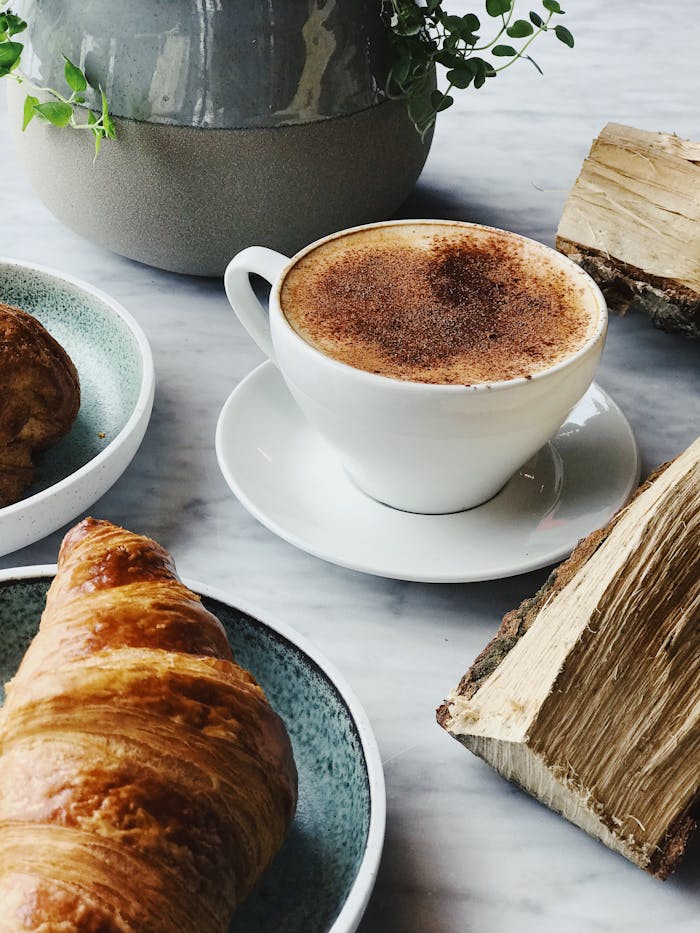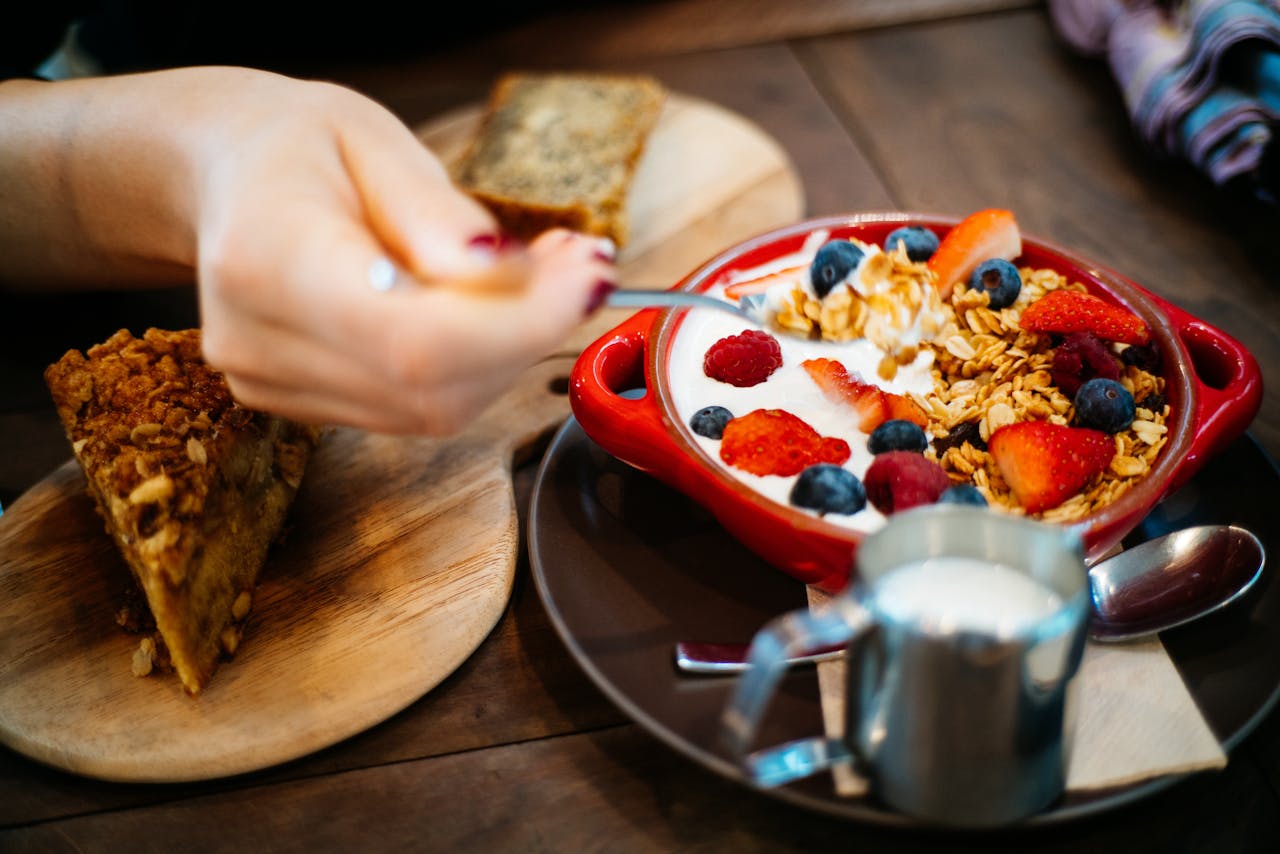|
IN BRIEF
|
Coffee is more than just a morning ritual; it’s a canvas for creativity, especially in the world of latte art. Dive into this captivating realm where technique meets imagination. From the swirling patterns of a rosetta to the vibrant hues of a heart-shaped pour, latte art invites coffee enthusiasts to transform their favorite beverages into stunning masterpieces. Mastering the art of pouring requires practice, patience, and a dash of passion, but the rewards are plentiful. Not only do these artistic endeavors enhance your coffee experience, but they also serve as a delightful way to engage with the local coffee community. Join me as we explore essential tips and techniques that will elevate your coffee game and unlock the full potential of your specialty brews.
Exploring Latte Art and Specialty Coffees
Latte art and specialty coffees have gained immense popularity in recent years, drawing coffee enthusiasts into a world of creativity and flavors. The art of creating beautiful designs atop a creamy latte not only enhances the visual appeal of the drink but also reflects the passion and skill of the barista. Furthermore, specialty coffees elevate the entire experience, offering distinct flavors and aromas that tantalize the taste buds.
The Origins of Latte Art
The history of latte art can be traced back to the early days of espresso, with its roots firmly planted in Italy. As espresso-based drinks became popular, skilled baristas began experimenting with milk frothing techniques to create visually appealing designs on top of the coffee. Initially, simple patterns such as hearts and rosettas were introduced, but the art has evolved into a sophisticated form practiced by baristas globally. Understanding this historical context adds depth to the appreciation of latte art.
Essential Tools for Latte Art
To start creating latte art, it is crucial to have the right tools. Investing in quality equipment not only improves the outcome but also enhances the overall coffee-making experience.
Espresso Machine
An efficient espresso machine is the cornerstone of good latte art. Ensure that the machine has the capacity to create microfoam, which is essential for detailed designs. A machine with a steam wand allows for better control of the milk frothing process.
Milk Steaming Pitcher
A good quality milk steaming pitcher is instrumental in achieving the perfect foam. The pitcher’s spout should be designed for precise pouring, enabling baristas to create intricate patterns easily. The size of the pitcher may also affect the pouring technique, with smaller pitchers being easier for more delicate designs.
Fresh Ingredients
Using fresh, high-quality ingredients is vital for crafting exceptional specialty coffees. Opt for fresh beans that are roasted appropriately and milk that’s full-bodied for the best frothing results. This will enhance both flavor and texture.
Understanding Milk Texture
Mastering the texture of milk is fundamental to creating stunning latte art. Achieving the right consistency transforms your milk into a canvas for your espresso.
Microfoam vs. Macrofoam
Microfoam is the fine, velvety foam crucial for latte art. It is achieved through the incorporation of air during steaming while keeping the milk at a lower temperature—ideally around 140°F to 150°F. On the other hand, macrofoam creates larger bubbles and is unsuitable for intricate designs.
Steaming Techniques
Frothing milk requires practice and precision. Begin by positioning the steam wand just below the surface of the milk and opening the steam valve. As the milk begins to froth, slowly submerge the wand deeper while maintaining the correct angle. This technique produces the necessary microfoam ideal for latte art. It may be worthwhile to check out resources like latte art pouring tips and tricks to enhance your skills.
Latte Art Techniques
There are two predominant techniques utilized in latte art: free pouring and etching. Each method offers distinct advantages and creative possibilities.
Free Pouring
The free pouring technique is the most common approach. It involves pouring steamed milk directly into the espresso in a controlled manner, allowing the milk to create designs naturally. The key to mastering free pouring lies in consistency and practice. Start with simple designs, such as a heart or a rosette, and gradually progress to more complex patterns.
Etching
Etching is another captivating technique used to create more detailed designs. This method uses a thin tool, like a toothpick or a latte art pen, to draw on top of the froth. Etching allows for intricate designs, such as flowers or complex patterns, giving baristas more creative freedom. The skills required for etching often complement free pouring, allowing for diverse artistic expression.
Practicing Latte Art
Achieving proficiency in latte art requires consistent practice. Begin by focusing on each technique separately to build a solid foundation. Here are some tips to effectively hone your skills.
Finding Your Rhythm
When practicing free pouring, finding your rhythm is essential. Allow your thumb to rest on the milk pitcher while pouring. As the milk flows, adjust your speed to see how it affects the design. The more comfortable you become with different pouring speeds, the more control you will have over your patterns.
Experimenting with Milk Types
Try using different types of milk to expertly create foams that differ in taste and texture. While whole milk generally produces the best microfoam, alternatives like almond or oat milk can also work well with practice. Each variety will offer unique flavors, making your latte art experience more enjoyable.
Specialty Coffee – The Perfect Pairing
Specialty coffee transcends ordinary coffee experience, introducing aficionados to unique flavors and aromas. It is important to pair your latte art with high-quality coffee to enhance both taste and visual aesthetics.
Selecting Quality Beans
When choosing coffee beans, search for those labeled as specialty coffee, which indicates they have met high grading standards and possess desirable flavor attributes. Many roasters provide detailed descriptions of their beans, allowing you to select profiles that appeal to your preferences.
Brewing Methods
Exploring different brewing methods can also enhance your appreciation of specialty coffees. Methods like pour-over, Chemex, and French press allow for a more hands-on approach to coffee preparation, each producing a distinct flavor. Understanding how each brewing method affects the final cup will enrich your coffee journey.
Engaging with the Coffee Community
Involvement in the coffee community can significantly enhance your knowledge and skills in latte art and specialty coffees. Connecting with fellow coffee enthusiasts fosters creativity and learning opportunities.
Attend Workshops and Competitions
Participating in latte art workshops or coffee competitions is an excellent way to refine your skills. Engaging with experienced baristas provides invaluable insights and techniques, while sharing ideas with peers encourages innovation.
Visiting Cafés and Art Exhibitions
Discovering local cafés that showcase unique latte art exhibitions invites creativity into your coffee experience. Independent coffee shops often take pride in their presentation and may offer a diverse array of specialty coffees. Knowledgeable baristas can provide recommendations, adding depth to your appreciation for quality coffee and art.
Latte Art as a Customer Interactive Tool
Latte art is not just a decorative touch; it also serves a practical purpose in establishing a vibrant café atmosphere. By engaging customers with eye-catching designs, baristas create connections that enhance the overall experience.
Building Relationships
Baristas can foster a loyal clientele by developing their latte art skills. Customers appreciate the effort that goes into creating beautiful designs, leading to repeat visits. Furthermore, engaging with patrons while creating art builds personal connections that can enhance customer satisfaction.
Social Media Presence
Additionally, sharing images of your latte art on social media platforms can attract new customers. Highlighting your barista skills and specialty coffee offerings creates a buzz around your café, increasing visibility in the competitive coffee market.
Taking it Home
For coffee lovers keen on trying latte art at home, the journey is accessible with a few tools and a determination to practice.
Set Up Your Space
Creating a dedicated space for coffee preparation at home helps establish a routine. Organize your equipment, invest in freshly roasted coffee beans, and ensure you have quality milk on hand. This setup promotes consistency and inspires daily practice.
Online Resources for Learning
Utilizing online tutorials and courses is an excellent way to learn at your own pace. Platforms like De’Longhi offer step-by-step guides to help you master the art of latte pouring. Additionally, exploring coffee blogs and videos, like those on YouTube, can provide further inspiration and techniques.
Final Thoughts
Latte art and specialty coffees invite creativity and enjoyment into the world of coffee aficionados. By mastering essential techniques, investing in quality ingredients, and engaging with the community, coffee lovers can elevate their skills and craft remarkable experiences. The joy of creating beautiful coffee art with delicious flavors embodies the true essence of coffee culture.
Exploring latte art and specialty coffees is an exhilarating journey for coffee lovers. To dive into the world of latte art, understanding the fundamental techniques is crucial. Two primary styles dominate the scene: free pouring and etching. Free pouring, the more accessible method, involves skillfully controlling the flow of steamed milk to create designs like hearts and rosettas.
According to recent studies, nearly 370,000 people have expressed interest in learning latte art, showcasing the growing trend among coffee aficionados. To master this craft, practice is essential. Start with pouring your steamed milk from a distance and gradually get closer, allowing for precision and control. Varying your pouring speed will also help in achieving different patterns.
Moreover, investing in quality coffee beans enhances the overall experience. Experts recommend using freshly roasted beans to elevate the flavor profile of your beverages. Consider incorporating unique blends to create specialty lattes that stand out. Pair these drinks with light snacks or delicious breakfast bowls, which can further enrich your café experience. Remember, the allure of latte art lies not only in the final product but also in the methodical process of creating it.
Latte art is not only a feast for the eyes but also a reflection of one’s passion for coffee. Employing various techniques such as free pouring and etching, coffee lovers can transform an ordinary cup into a stunning masterpiece. Mastering these skills requires practice, but the rewards are immense; it allows one to connect with others while sharing the joy of art and innovation in every cup. To elevate your creations, pay attention to quality beans and precise steaming techniques. Remember, each pour tells a story, evoking emotion and sparking conversation. Whether you’re at a bustling café or a cozy home setting, let your imagination run wild and embrace the beautiful world of latte art.
FAQ
What are the main techniques used in latte art?
R: The primary techniques for creating latte art are free pouring and etching. Free pouring involves controlling the flow of steamed milk to create designs, while etching is a technique that uses a tool to draw designs on the surface of the latte.
How can I improve my latte art skills?
R: To enhance your latte art skills, consistent practice is essential. Try varying the speed of your pouring and experiment with different angles to see how they affect the final design.
What is the importance of using quality coffee beans for latte art?
R: The quality of coffee beans significantly impacts the taste and texture of your espresso, which is crucial for achieving well-defined latte art. Freshly roasted beans create better crema, improving your designs.
Are there any specific tools needed for creating latte art?
R: While the basic tool needed is a steaming pitcher for milk, baristas often benefit from having an assortment of etching tools and high-quality espresso machines that provide consistent temperatures and pressure.
What are some common mistakes to avoid when trying to create latte art?
R: Some common mistakes include using milk that is either too hot or too cold, inadequate frothing techniques, and pouring too quickly. Mastering the milk frothing process and controlling your pour speed are essential to avoid these pitfalls.

